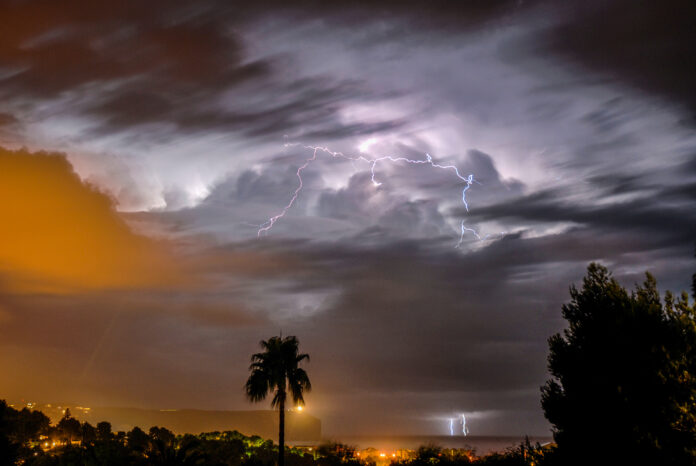
As the new year of 2024 unfolds, the nation has been greeted with a precautionary alert from the Meteorology, Climatology, and Geophysics Agency (BMKG). Urging caution, BMKG advises the public to remain vigilant against potential extreme weather conditions until January 10, 2024.
According to the official statement, BMKG underscores that from January 3 to January 10, 2024, a significant portion of Indonesia faces the possibility of encountering extreme weather, including moderate to heavy rainfall accompanied by thunder and strong winds.
This caution extends beyond a mere advisory, with BMKG emphasizing the need for heightened vigilance, particularly for communities situated in steep, mountainous, or cliff-ridden terrains.
Guswanto, Deputy of Meteorology, highlighted, “Especially for regions with steep topography, mountains, cliffs, or vulnerability to landslides and floods, it is crucial to maintain vigilance against potential impacts such as floods, flash floods, landslides, slippery roads, fallen trees, and reduced visibility.” This cautionary statement was issued on Saturday (6/1/2024).
BMKG’s latest analysis reveals atmospheric dynamics contributing to the potential for extreme weather in various regions. Factors contributing to this scenario include the Winter Monsoon of Asia, the Madden Jullian Oscillation (MJO) activity, and the presence of Rossby Wave Activity.
The Winter Monsoon of Asia, known as the westerly monsoon season, is beginning to exert its influence on the potential increase in moist air masses around the Indonesian region. This suggests a relatively intense growth of rain clouds during the month of January.
Simultaneously, the MJO has entered Indonesian territory, indirectly heightening the potential for moderate to heavy rainfall in several regions.
Guswanto elaborates, “These conditions are reinforced by the activity of Rossby waves in the western part of Indonesia and are expected to persist for the next five days.” Another dynamic factor contributing to this potential is the formation of wind convergence and wind bending patterns around the regions of Sumatra, Java, and Kalimantan.
The combination of these atmospheric dynamics sets the stage for moderate to heavy rainfall across almost all regions of Indonesia. The affected areas span from Aceh in the west to Papua in the east, covering provinces such as North Sumatra, West Java, Central Sulawesi, and beyond.
As BMKG issues this cautionary alert, it underscores the importance of proactive planning and efficient execution to mitigate the impact of heightened movement during the Nataru holiday period. The collaboration and coordination of various stakeholders, including government bodies, transportation operators, toll road authorities, media outlets, and the public, have played a pivotal role in ensuring a safe, secure, comfortable, and smooth travel experience.
In summary, the atmospheric conditions, driven by the Winter Monsoon of Asia, MJO activity, and Rossby waves, create an environment conducive to increased rainfall across Indonesia. As citizens and authorities remain on high alert, the nation is urged to adapt and respond effectively to these weather dynamics to ensure the well-being and safety of all.






















